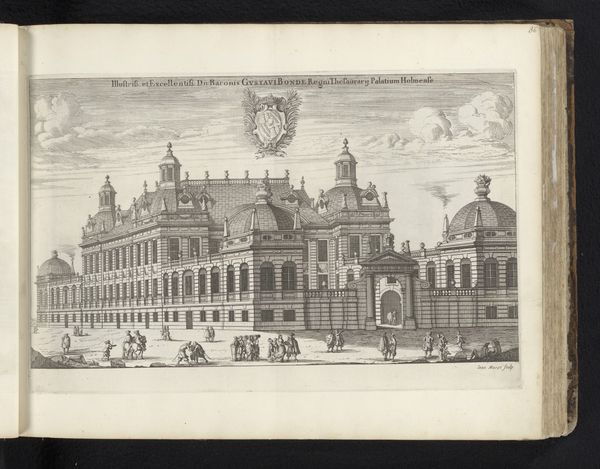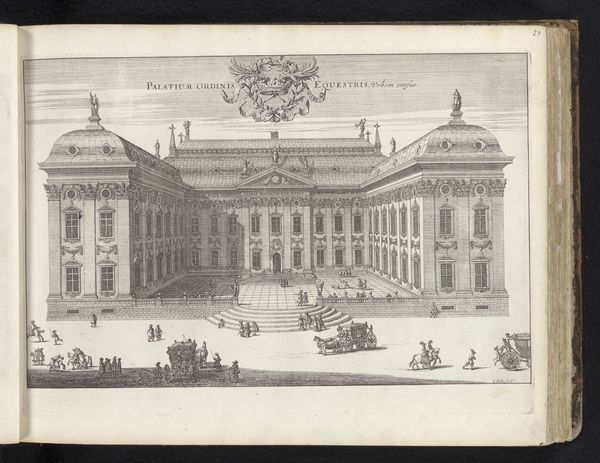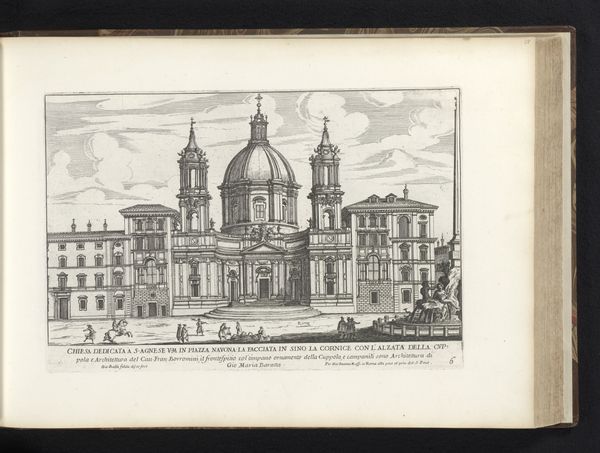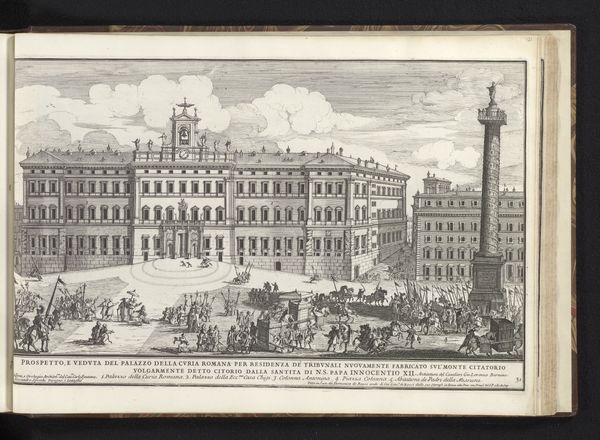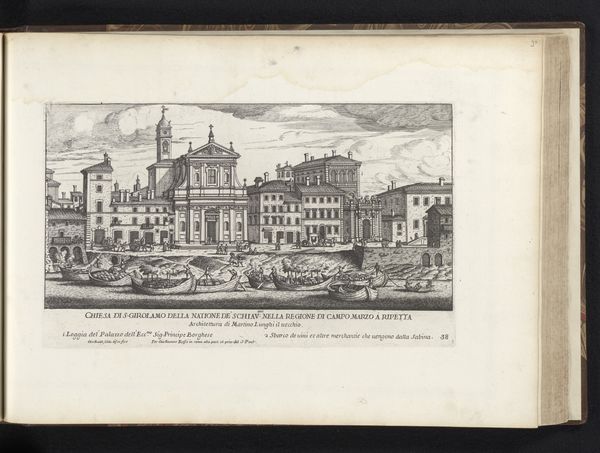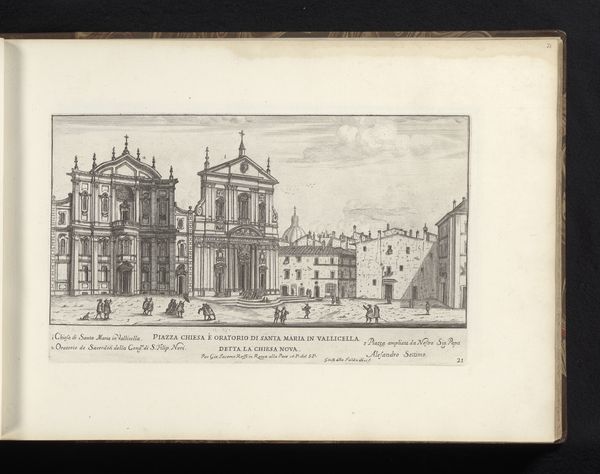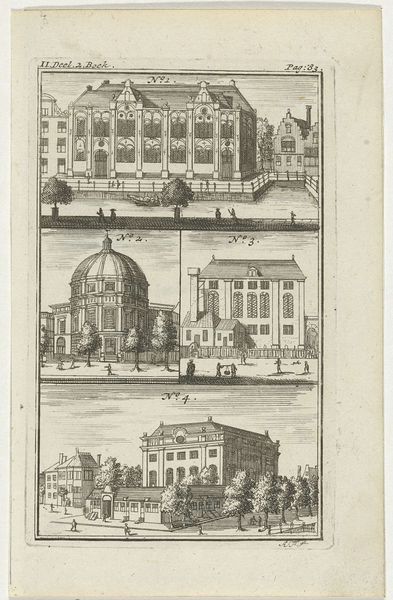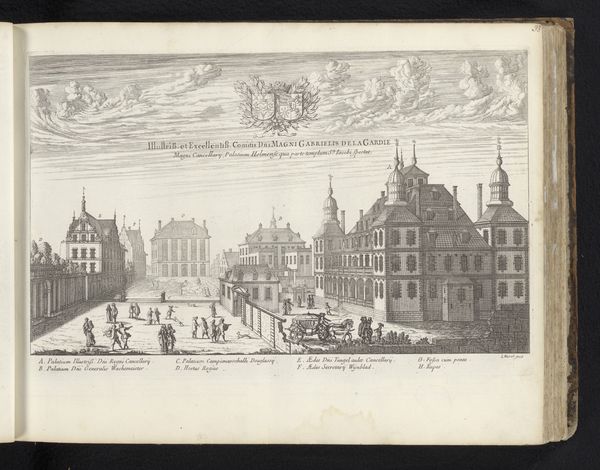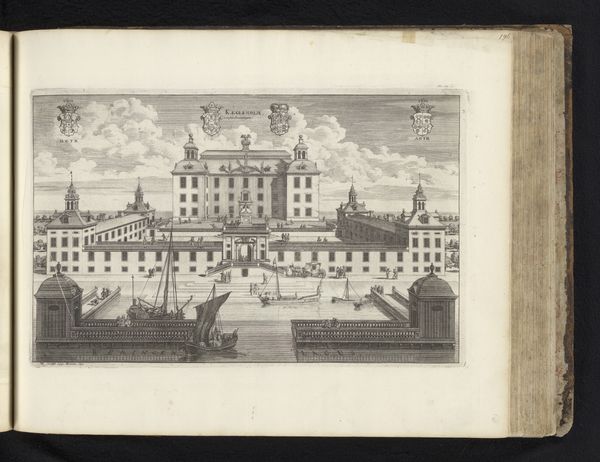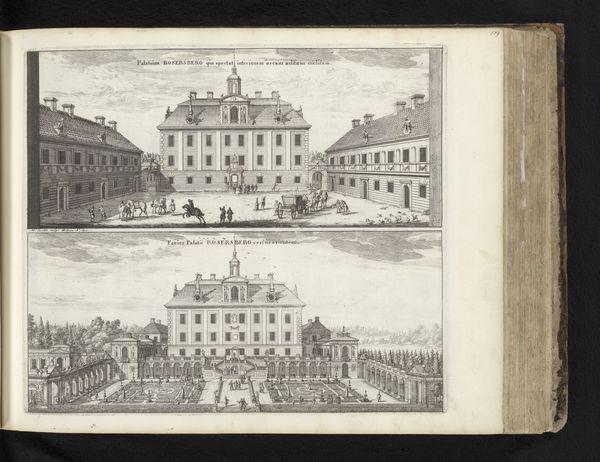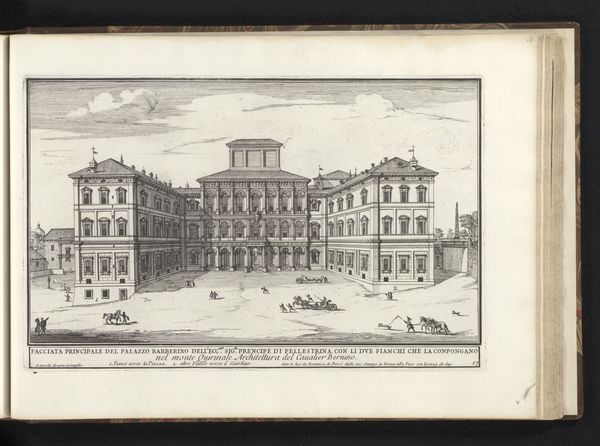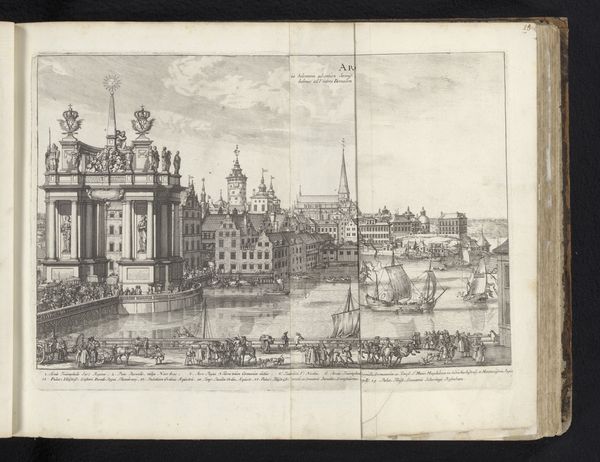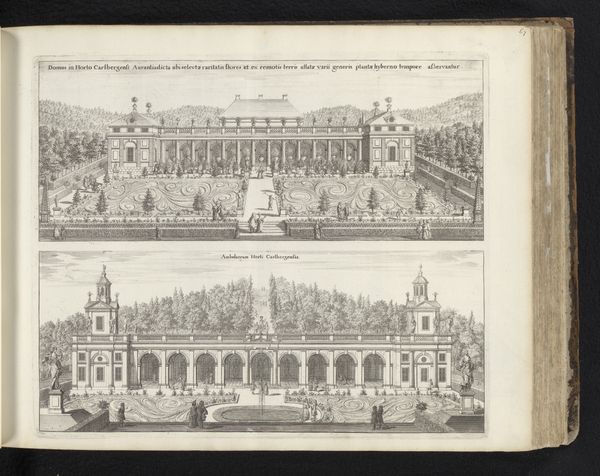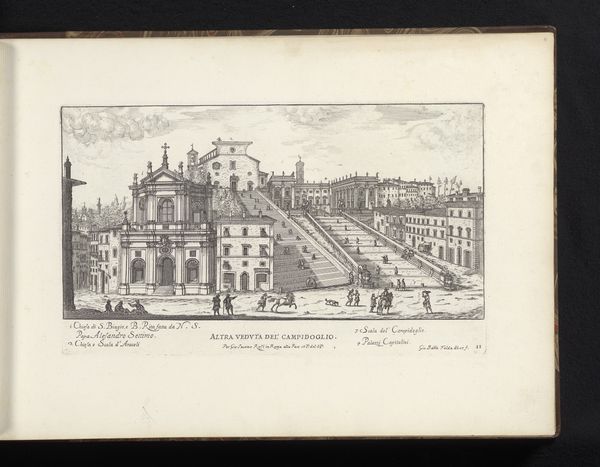
print, etching, engraving, architecture
#
baroque
# print
#
etching
#
cityscape
#
engraving
#
architecture
Dimensions: height 237 mm, width 373 mm
Copyright: Rijks Museum: Open Domain
Editor: This is "Paleis van Carl Gustaf Wrangel aan stadszijde," a cityscape created around 1667 by Jean Marot the first, using etching and engraving techniques. There's an incredible formality and control to the lines; it makes the palace seem almost like a stage set. What social dynamics were at play that you see reflected in this piece? Curator: It’s crucial to consider the power structures inherent in such a depiction. These grand Baroque buildings were visual statements of authority and control during a period of immense social inequality. Who had access to such spaces? Whose labor created them? Think about the role of the military leader Wrangel – whose power does this structure protect and extend? Editor: So it's more than just a picture of a building, it's about visualizing power? Curator: Absolutely. Marot wasn't just rendering architecture, he was codifying a specific social order. Look at how the human figures are dwarfed by the scale of the palace, emphasizing their relative insignificance in this hierarchy. Consider too, what this image meant in print form – making accessible this vision of power to a potentially broader audience, but who was truly meant to consume this image? Editor: It makes me rethink what I initially saw as just technical skill; now it seems like strategic visual propaganda. Curator: Precisely! And thinking about the Baroque style itself, it served the interests of absolutist rule and the Church by being overwhelming. What can seemingly beautiful and ornamented mask when employed by forces of oppression and colonization? Editor: I never considered that connection so directly before. It is unsettling to think how aesthetics can legitimize inequality. I’m starting to understand how a cityscape can actually *be* a political statement. Curator: Exactly, art gives insight into ways that class, politics, and social order can be embedded in even the most apparently straightforward representations.
Comments
No comments
Be the first to comment and join the conversation on the ultimate creative platform.
